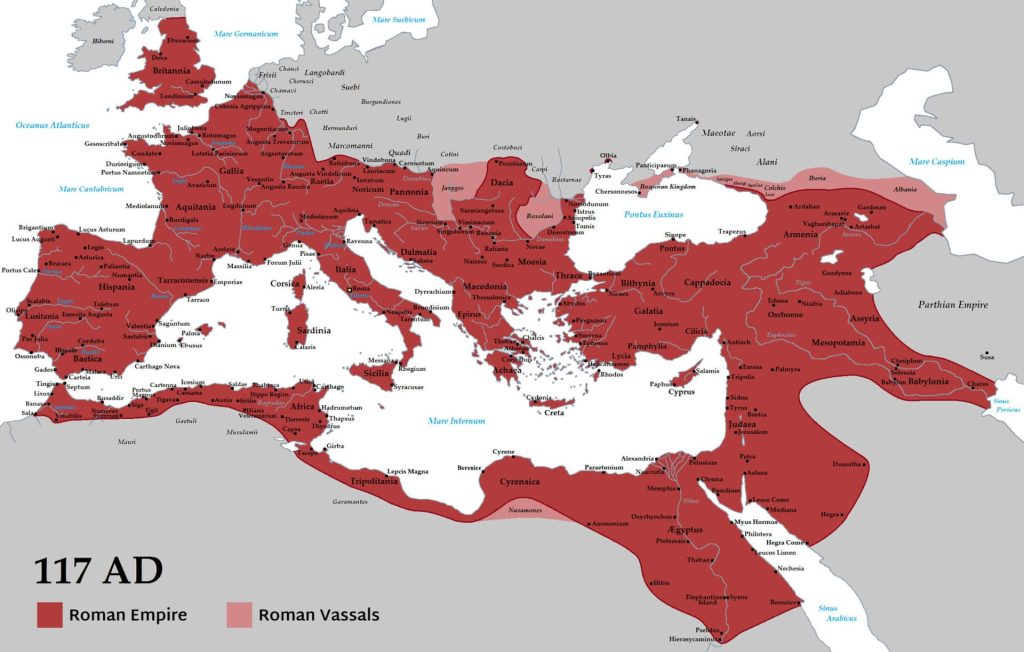
The Roman Empire’s history began in 753 BCE with the legendary founding of Rome by Romulus and Remus. Rome, previously a small city-state, Rome’s strategic location along the Tiber River allowed it to expand through military conquest and alliances. Rome transformed from monarchy to republic sometime around 509 BCE, possessing a highly developed system of government that highly valued civic responsibility as well as military might. This set the stage for Rome’s eventual dominance over the Mediterranean.
Expansion and imperial glory
During the Republic, Rome expanded its dominions in Italy and overseas, engaging in a series of wars known as the Punic Wars with Carthage. The victories in these wars, especially the destruction of Carthage in 146 BCE, secured Roman hegemony in the western Mediterranean. The next period saw the rise of powerful generals like Julius Caesar, Pompey, and Crassus, whose ambition led to civil war. Julius Caesar’s crossing of the Rubicon in 49 BCE ended the Republic and started imperial rule.
The Pax Romana: An age of peace
It was during the reign of Emperor Augustus, who was the first Roman Emperor in 27 BCE, that Rome fell into a time referred to as the Pax Romana—”Roman Peace.” It was a time of approximately 200 years when there was economic abundance, gigantic building projects, and general stability across the empire. The roads, aqueducts, and cities of Rome all prospered, connecting the immense lands. The grand size of the empire and good administration guaranteed centuries of rule, which turned Rome into the preeminent power of the ancient world.
Decline and challenges
Despite its earlier energy, the Roman Empire was also beset by numerous challenges in the 3rd century CE. Political unrest, economic debility, and external invasions strained the resources of the empire. The third-century crisis chronicled numerous usurpers and civil wars. In addition, barbarian tribes such as the Goths, Vandals, and Huns put more pressures. The empire was split into the Western and Eastern Roman Empires in 285 CE to cope with such pressures more effectively, yet the fall of the Western Roman Empire was inevitable.
The fall of the Western Roman Empire
The fall of Rome is traditionally dated in 476 CE when the last Western Roman emperor, Romulus Augustulus, was deposed by the German chieftain Odoacer. This was the collapse of Roman political authority in the west, although the Eastern Roman Empire, or Byzantine Empire, lasted for nearly another thousand years. Factors like economic troubles, loss in war, and corruption in continued to fuel the fall of the Western Empire. Rome’s decline continues to be a reminder of the transience of even the greatest civilizations.